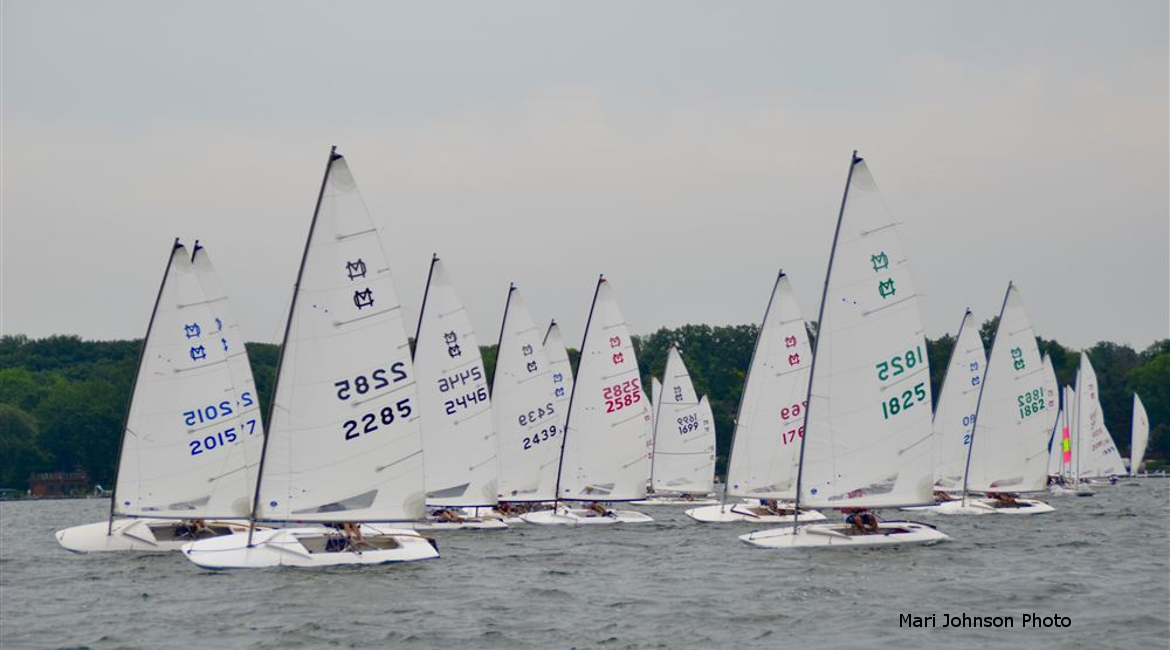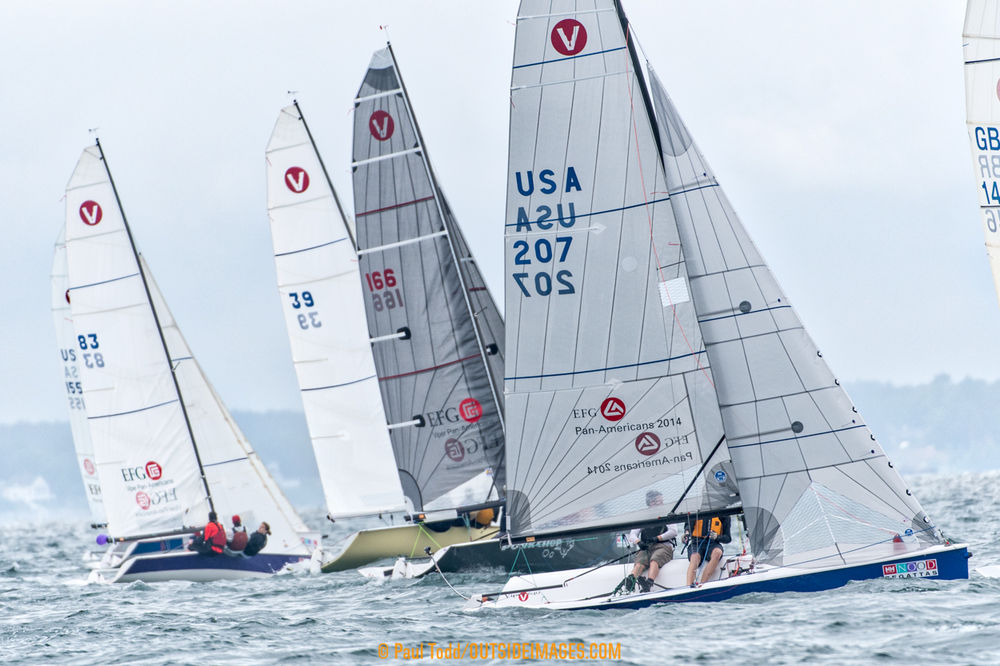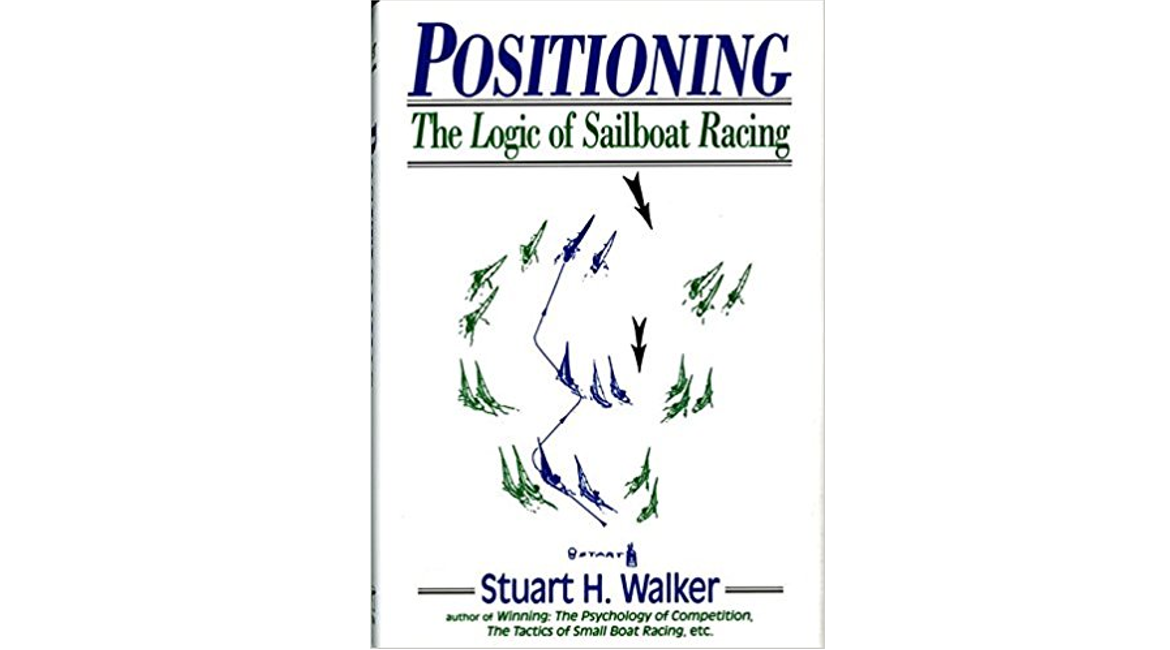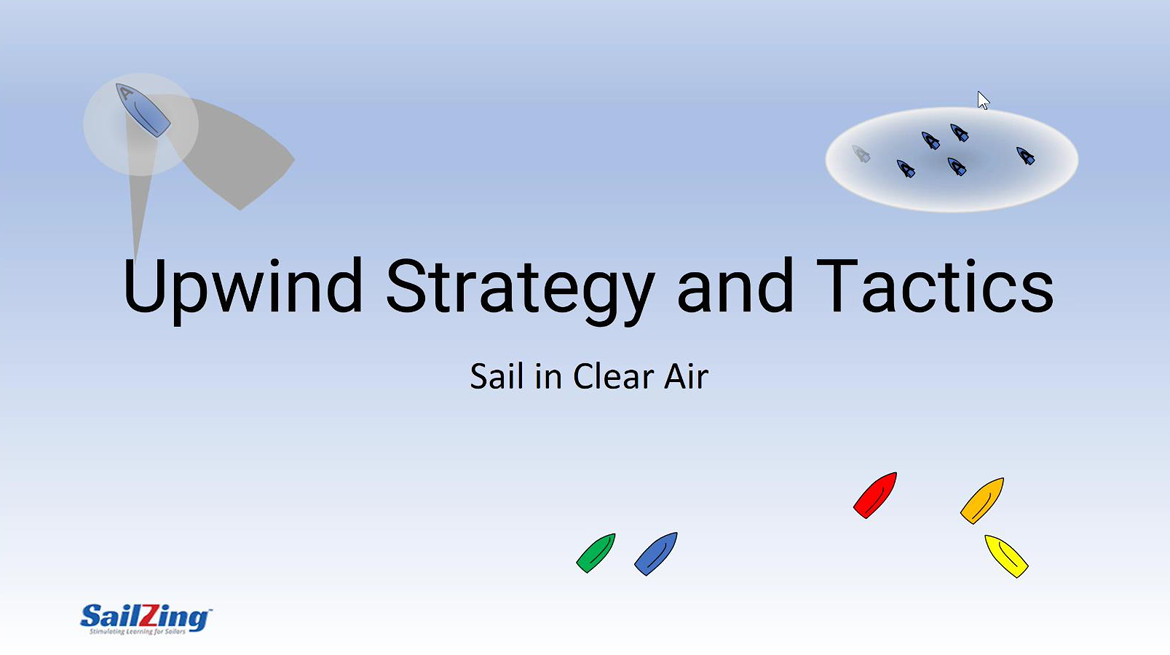Sail the Lifted Tack
We all know this is a fundamental upwind racing strategy, but do we know when and how to apply it correctly? This article summarizes the clearest explanations we’ve found aimed at sailors that want a little more than a rudimentary understanding. In later articles, we’ll cover more of the nuances.
The Lifted Tack Results in the Shortest Distance Sailed
In a classic oscillating wind, where the wind is shifting back and forth around a median direction, you will sail the shortest distance by tacking when headed below the median direction.
When the wind is oscillating back and forth, a lot of sailors wait too long after the start to get on the lifted tack. Unless there is a good reason (more about that below), get on the lifted tack as soon as possible after the start, and try to be the first boat to the next oscillation (which will be a header in a classic oscillating breeze). When planning your start in these conditions, it’s less important to start at the favored end of the line than it is to be able to get on the lifted tack and sail toward the next header. Plan your start with this in mind.
Recognizing the lifted tack
Many sailors have trouble recognizing which tack is lifted, especially if the difference between lifted and headed tacks within 5 to 10 degrees. Without a compass, you need a way to monitor your heading compared to the heading for the average wind direction. This is tricky, because your reference points will change as your position on the course changes. Furthermore, as the wind speed changes, so does your average heading, even without a wind shift. Go out and practice to develop your sense of this. For tips, see our post Recognizing the Lifted Tack.
Even on lakes where you do have good reference points, some coaches recommend using a compass to determine whether you are on the lifted tack. See a great discussion of the benefits of a compass in Sailboat Racing with Greg Fisher, Chapter 8. Or see our post on Race Compass Smarts.
When to tack
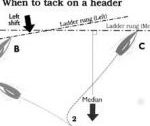
You’re sailing on the lifted tack in an oscillating breeze and you start to get headed. Should you tack at the beginning of the header? Dave Dellenbaugh offers a very clear explanation of the right way to apply this principle when sailing upwind in this older article from Speed and Smarts on the Sailing Breezes website.
When to avoid the lifted tack
In some situations, sailing the lifted tack is the wrong thing to do. Here are three:
- To get to a persistent or final shift. If the wind is going to shift in one direction and stay there for the duration of the leg, you need to sail the tack that gets you that shift first, even if it is not the lifted tack.
- In light air or any time one part of the course is clearly advantaged due to stronger wind. In this case, you want to get to the advantaged location without delay.
- Near the end of the leg. In this case, you want to avoid getting to the laylines too early, where a shift in any direction will either cause you to overstand or be unable to make the mark, requiring two extra tacks.
Stuart Walker offers a nice explanation of this in an article from Sailing World.
Sailors Helping Sailors
Will you share your knowledge with your related Comments below?

